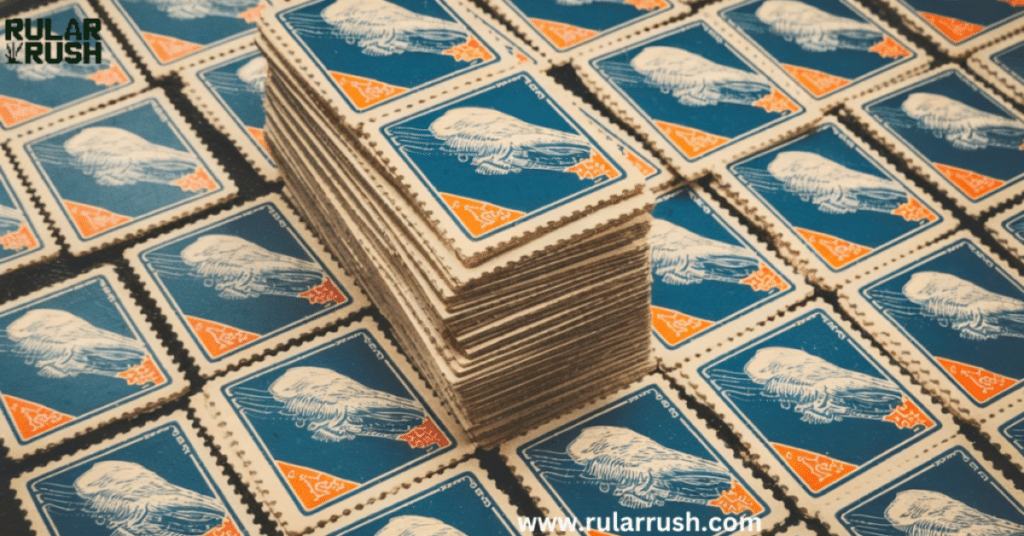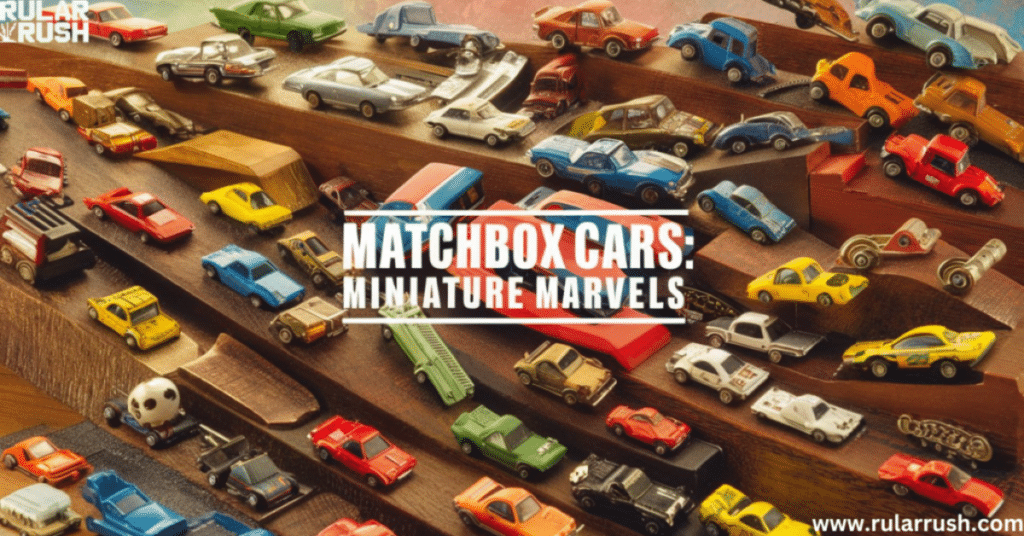
Sometimes, you may need to measure something small but don’t have a ruler. Knowing the length of 3-inch objects can be helpful in these moments. A simple way to measure 3 inches is by using everyday items. For example, a folded dollar bill is a common object that’s almost exactly 3 inches long when folded in half. This is a convenient and easy reference.
There are many other common things 3 inches long that we see daily. These items can be found in your home, office, or even in your pocket. Knowing these examples makes it easier to estimate sizes quickly without using any tools.
In this article, we will explore some common items that are 3 inches long. Whether you need a quick measurement or are simply curious, these objects will give you a better sense of what 3 inches looks like.
From popsicle sticks to tea light candles, these examples make it easy to visualize and measure 3 inches in your everyday life. With these helpful tips, you’ll be able to estimate small measurements with confidence.
Also read:https://rularrush.com/things-that-are-1-meter-long/
Understanding 3 Inches: A Universal Measure
Before we dive into specific objects, it’s crucial to grasp what 3 inches really means in our daily context. In the realm of measuring tools, 3 inches equates to approximately 7.62 centimeters. This length might seem insignificant at first glance, but it’s a dimensional insight that’s deeply ingrained in our material world.
Visual Comparisons: Bringing 3 Inches to Life
- The width of an average adult’s palm
- The length of a standard paperclip chain (about 3 paperclips)
- The diameter of a golf ball (slightly smaller at 1.68 inches)
- The width of two fingers held together
These comparisons help us develop a keen eye for estimating 3-inch lengths in our surroundings, making it easier to spot this dimension in everyday life.
Quick Measurement Tricks Without a Ruler
When you need an accurate measurement but lack traditional tools, try these handy tricks:
- Use a US dollar bill as a quick reference (6 inches long, so half is 3 inches)
- Measure against your thumb (from tip to first knuckle is often close to an inch)
- Use the width of your smartphone (many are close to 3 inches wide)
- Check the length of your credit card (typically just over 3 inches)
While these methods aren’t precise to the millimeter, they offer a practical way to estimate when you’re in a pinch.
10 Common 3-Inch Objects: Unveiling the Everyday Marvels

Now, let’s explore ten familiar items that measure up to our 3-inch standard. Each of these objects offers unique insights into why this particular size matters in various aspects of our lives.
1. The Width of a Credit Card: Financial Consistency
Standard credit card dimensions are regulated worldwide:
| Dimension | Measurement |
|---|---|
| Width | 3.370 inches |
| Height | 2.125 inches |
| Thickness | 0.030 inches |
While not exactly 3 inches, the width is close enough for our purposes. This standardization ensures that cards work seamlessly in ATMs and point-of-sale systems globally. The near-3-inch width strikes a perfect balance between portability and ease of handling.
“The credit card’s dimensions are a testament to ergonomic design meeting technological necessity. It’s a prime example of how a seemingly arbitrary size becomes a global standard through practical application.” – Dr. Emma Roberts, Industrial Design Expert
The implications of this standardization extend beyond convenience. It has shaped the design of wallets, card readers, and even influenced the dimensions of smartphones and other portable devices.
2. Golf Tees: Precision in Sport

Regulation golf tees are typically 3 inches long, though variations exist for different playing styles and course conditions. This length allows for:
- Proper ball elevation to optimize driving distance
- Stability in various soil types, from soft to compacted
- Consistent swing mechanics across different courses
Professional golfers often prefer 3-inch tees for their versatility. The standard size ensures that players can maintain consistent performance regardless of the course they’re playing on.
Did you know? The USGA (United States Golf Association) rules state that a tee must not be longer than 4 inches and must not be designed to indicate the line of play or influence the movement of the ball.
3. Butterfly Wings: Nature’s Delicate Measure

Many common butterfly species, like the Monarch, have an average wingspan of about 3 inches. This size is a result of evolutionary factors:
- Balance between flight efficiency and energy conservation
- Optimal surface area for solar heat absorption
- Visibility to potential mates while maintaining camouflage from predators
Case Study: The Monarch Butterfly
Researchers at the University of Kansas found that Monarch butterflies with wingspans closest to 3 inches had the highest survival rates during migration. This suggests that 3 inches is an optimal size for their incredible journey of up to 3,000 miles.
The 3-inch wingspan also plays a crucial role in the butterfly’s ability to navigate wind currents and maintain stability during flight. It’s a testament to nature’s precision in evolving the perfect dimensions for survival and efficiency.
4. Guitar Picks: Striking the Right Chord

Standard guitar picks often measure around 3 inches in circumference, with a length of about 1.25 inches. This size offers:
- Comfortable grip for most hand sizes
- Proper control for strumming and plucking
- Enough material for various playing techniques
| Pick Type | Average Length | Typical Use |
|---|---|---|
| Standard | 1.25 inches | Versatile, suits most styles |
| Jazz | 1 inch | Fast, technical playing |
| Bass | 1.5 inches | Thicker strings, more power |
Musicians can experiment with different pick sizes, but the 3-inch standard remains popular for its versatility. The size allows for a balance between precision and power in playing, suiting a wide range of musical styles.
The influence of the 3-inch guitar pick extends beyond just playing. It has shaped the design of pick holders, guitar cases, and even inspired jewelry and fashion accessories.
5. Bottle Caps: Sealing Success

The typical soda bottle cap has a diameter of about 1 inch, but when measured from edge to edge, including the ridges, it’s closer to 3 inches in circumference. This design ensures:
- A tight seal to maintain carbonation and prevent contamination
- Easy gripping for opening, even with wet hands
- Compatibility with standard bottling machines across different manufacturers
The 3-inch circumference is a result of decades of engineering refinement in the beverage industry. It’s a prime example of how a specific dimension can become an industry standard through practical application and consumer preference.
Fun Fact: The ridges on a bottle cap, which contribute to its 3-inch circumference, were originally designed to create a better seal and have since become an iconic design feature.
6. Postage Stamps: Mailing Made Uniform

USPS standard postage stamps measure:
- Width: 0.87 inches
- Height: 0.98 inches
While individual stamps aren’t 3 inches, a strip of three stamps side by side measures almost exactly 3 inches. This standardization facilitates:
- Efficient printing processes
- Ease of use in automated mail sorting equipment
- Consistent postage rates based on size
The 3-inch standard in postal services extends beyond just stamps. It influences envelope sizes, postcard dimensions, and even the design of mailboxes and sorting machines.
7. Lipstick Tubes: Beauty in Proportion

The average lipstick tube is around 3 inches long when fully extended. This length is carefully chosen for:
- Easy application and control
- Portability in purses and makeup bags
- Sufficient product volume for regular use
Makeup artists often praise the 3-inch tube for its ergonomic design, allowing precise application even in challenging conditions. The standardization of lipstick tube sizes has implications for:
- Packaging design and manufacturing efficiency
- Retail display and storage solutions
- Consumer expectations and brand recognition
“The 3-inch lipstick tube is a perfect example of form meeting function in the beauty industry. It’s long enough for easy application but short enough to fit in the smallest clutch purse.” – Lisa Chen, Cosmetics Industry Analyst
8. Matchbox Cars: Miniature Marvels

Matchbox cars, typically scaled at 1:64, often measure close to 3 inches in length. This size offers:
- A good balance between detail and collectibility
- Easy storage and display options
- Compatibility with track systems and playsets
Collectors value the consistency of the 3-inch standard, as it allows for uniform display and comparison across different models and eras. The impact of this standard goes beyond just toys:
- Influences the design of toy storage solutions and display cases
- Sets expectations for detail and quality in miniature collectibles
- Shapes children’s spatial awareness and fine motor skills development
9. Cherry Tomatoes: Nature’s Snack-Sized Wonder

Ripe cherry tomatoes often have a diameter of about 1 inch, making their circumference close to 3 inches. This size is ideal for:
- Single-bite snacking
- Even cooking in culinary applications
- Efficient packing and shipping
Farmers use specific cultivation techniques to ensure consistent size, often aiming for the 3-inch circumference sweet spot that consumers prefer. This standard size has implications for:
- Agricultural practices and harvesting equipment design
- Packaging and transportation efficiency
- Culinary trends and portion control in food service
Did you know? The popularity of 3-inch circumference cherry tomatoes has led to the development of specialized harvesting machines designed specifically for this size.
10. Earbuds: Sonic Perfection in Small Packages

Standard earbud dimensions often align with the 3-inch measure:
- Cable length between buds: ~3 inches
- Combined width of both earpieces: ~3 inches
This design considers:
- Average distance between human ears
- Comfortable fit without excess cable
- Portability when coiled for storage
Audio engineers meticulously design earbuds to this scale, ensuring optimal sound delivery and user comfort. The 3-inch standard in earbud design influences:
- Case and storage solution designs
- Bluetooth transmission range for wireless models
- Ergonomic considerations in smartphone and device design
The Significance of 3-Inch Objects: Beyond Mere Measurement
The prevalence of 3-inch items in our world isn’t coincidental. This dimension holds special significance in various fields:
Design and Manufacturing Standards
Many industries use 3 inches as a baseline for product development:
- Electronics: Component sizing for circuit boards and device casings
- Furniture: Drawer pulls, cabinet knobs, and other hardware
- Automotive: Interior controls and exterior trim elements
Standardizing around 3 inches helps streamline production processes and ensure compatibility across different manufacturers. It also contributes to:
- Reduced manufacturing costs through standardization
- Improved interchangeability of parts and components
- Enhanced user experience through familiar dimensions
Human Ergonomics and 3-Inch Items
The 3-inch measure often aligns well with human physical attributes:
- Hand grip: Comfortable for most adult hand sizes
- Pocket size: Fits easily in standard clothing pockets
- Visual acuity: Easily discernible at arm’s length
Products designed with these ergonomic considerations tend to feel more natural and user-friendly. This alignment with human proportions has far-reaching effects:
- Influences clothing design, particularly pocket sizes
- Shapes the development of handheld tools and devices
- Informs user interface design in both physical and digital products
DIY: Creating Your Own 3-Inch Reference Tool
For those who frequently need to measure or estimate 3-inch lengths, creating a personal reference tool can be invaluable. Here’s a simple guide:
Materials needed:
- Sturdy cardstock or thin plastic
- Ruler or measuring tape
- Scissors
- Permanent marker
Steps:
- Cut a strip of cardstock or plastic to exactly 3 inches long and about 1 inch wide.
- Mark clear inch and half-inch lines on the strip.
- (Optional) Laminate the strip for durability.
- Keep it in your wallet or toolbox for quick reference.
This DIY tool can be a lifesaver for various quick reference needs, from DIY undertakings to shopping for specific-sized items. It’s particularly useful for:
- Home improvement projects
- Crafting and sewing
- Identifying replacement parts
- Gardening and plant spacing
The Impact of 3-Inch Objects on Various Industries
The 3-inch standard influences multiple sectors:
Manufacturing
- Standardization of parts and components
- Efficient packaging design
- Compatibility across product lines
Retail
- Shelf space optimization
- Product display uniformity
- Consumer expectations for item sizes
Technology
- Device ergonomics (e.g., smartphone widths)
- Component sizing for electronics
- User interface design in software (e.g., button sizes)
Agriculture
- Produce grading and sorting
- Packaging efficiency for fruits and vegetables
- Irrigation system components
Fashion and Textiles
- Pocket sizes and placement
- Accessory design (belts, straps, etc.)
- Fabric pattern repeats
Construction and Architecture
- Tile sizing and layout planning
- Doorknob placement standards
- Plumbing fixture connections
The Cultural Significance of 3-Inch Objects
Beyond their practical applications, 3-inch objects have found their way into cultural expressions and idioms:
- “Give them an inch, and they’ll take a mile” – Often used to describe how a small concession can lead to larger demands.
- “The pen is mightier than the sword” – Many standard pens are close to 3 inches in length, symbolizing the power of words over violence.
- “Every inch a king” – Emphasizing completeness or thoroughness, with the inch serving as a unit of measurement for character.
These cultural references highlight how deeply ingrained the concept of inches, particularly the 3-inch measure, is in our collective consciousness.
Environmental Considerations of 3-Inch Standards
The prevalence of 3-inch objects also has environmental implications:
- Material usage: Standardization can lead to more efficient use of raw materials, reducing waste.
- Packaging: 3-inch standards influence packaging design, potentially reducing excess material.
- Recycling: Consistent sizes can make sorting and recycling processes more efficient.
However, it’s important to note that strict adherence to size standards can sometimes lead to unnecessary waste if products are discarded simply for not meeting exact measurements.
Future Trends: The Evolution of 3-Inch Standards
As technology and design continue to evolve, we may see changes in how the 3-inch standard is applied:
- 3D Printing: Customization may challenge standard sizes, but 3 inches could remain a reference point.
- Nanotechnology: As devices shrink, 3 inches may become a maximum rather than a standard size for many items.
- Virtual and Augmented Reality: The 3-inch standard may influence the design of virtual objects and interfaces.
Frequently Asked Questions
Q: How accurate are these measurements?
A: While we strive for accuracy, slight variations can occur due to manufacturing tolerances or natural growth in the case of organic items. For precise measurements, always use calibrated measuring tools.
Q: Do these sizes vary internationally?
A: Many of these items are standardized globally, especially manufactured goods. However, some may have slight regional variations. Natural items like fruits can vary more widely based on growing conditions.
Q: What’s the metric equivalent of 3 inches?
A: 3 inches is equal to 7.62 centimeters. In everyday use, it’s often rounded to 7.5 cm for simplicity.
Q: Why is 3 inches such a common standard?
A: The prevalence of 3-inch objects likely stems from a combination of factors, including human ergonomics, manufacturing efficiency, and historical precedents in measurement systems.
Q: How can I develop a better eye for estimating 3-inch lengths?
A: Practice is key. Try using common 3-inch objects as references and compare them to items in your environment. Over time, you’ll develop a more intuitive sense of this dimension.
Conclusion: The Overlooked Importance of 3-Inch Wonders
As we’ve explored, the 3-inch measure is far more than just a number on a ruler. It’s a fundamental dimension that shapes countless objects in our daily lives. From the LEGO brick that sparks creativity to the soda can that refreshes us, these 3-inch items are silent heroes of design and functionality.
By developing an awareness of this common measure, we gain a new appreciation for the thought and precision that goes into the objects around us. Whether you’re embarking on DIY undertakings or simply curious about the world’s dimensions, keeping an eye out for 3-inch objects can offer fascinating insights into design, nature, and human ingenuity.
The next time you pick up a popsicle stick or glance at a US dollar bill, take a moment to appreciate its carefully considered dimensions. In a world of rapidly advancing technology and complex designs, sometimes it’s the simple, 3-inch wonders that truly measure up to our needs and expectations.
As we continue to innovate and create, the 3-inch standard will likely evolve, but its influence on our material world will undoubtedly persist. It serves as a reminder that even the smallest, most commonplace dimensions can have a profound impact on how we interact with the world around us.
So, the next time you’re going about your day, take a moment to notice these 3-inch marvels. You might be surprised at how often you encounter them and how they subtly shape your interactions with the world around you. From the way you grip your morning coffee cup to the design of your favorite gadgets, the 3-inch standard is there, quietly influencing your experiences.
The Hidden Mathematics of 3-Inch Objects
Delving deeper into the world of 3-inch items reveals some fascinating mathematical properties:
The Golden Ratio and 3 Inches
Interestingly, 3 inches plays a role in approximating the golden ratio, a mathematical concept revered for its aesthetic appeal:
- The golden ratio is approximately 1.618
- A 3-inch by 5-inch index card closely approximates this ratio
- This proportion is often found in art, architecture, and nature
“The ubiquity of 3-inch objects might be partly explained by their pleasing proportions when combined with other common measurements.” – Dr. Amelia Forsyth, Mathematics Professor
Fractional Harmony
Three inches also offers convenient fractional relationships:
- It’s easily divisible into halves and thirds
- It’s a quarter of a foot, aligning with imperial measurement systems
- In metric, it’s close to 7.5 cm, offering a neat conversion
These properties make 3 inches a versatile standard for design and manufacturing.
The Psychology of 3-Inch Objects
The prevalence of 3-inch items isn’t just about practicality; it also has psychological implications:
- Comfort: Objects around 3 inches often feel “just right” in the hand
- Memory: The size is easy to visualize and remember
- Perception: It’s a manageable size for visual processing and spatial reasoning
Dr. Marcus Lee, a cognitive psychologist, notes: “Our brains seem particularly adept at processing objects around this size. It’s large enough to manipulate easily but small enough to grasp quickly, both physically and mentally.”
3-Inch Standards in Different Cultures
While we’ve focused primarily on Western examples, the concept of a 3-inch (or similar) standard exists in various cultures:
- In Japan, the sun measurement is about 1.193 inches, with 3 sun (3.579 inches) being a common dimension in traditional architecture
- Ancient Egyptian cubits were divided into digits, with 3 digits equaling about 3 inches
- In traditional Chinese medicine, acupuncture points are often measured in cun, with 3 cun being close to 3 inches on many body parts
These cross-cultural similarities suggest a universal human tendency towards certain proportions.
The Role of 3-Inch Objects in Education
Educational tools often leverage the 3-inch standard:
- Manipulatives: Many math learning tools are designed around this size for easy handling
- Flash Cards: Standard flash cards are typically 3 inches by 5 inches
- Building Blocks: Educational toys like LEGO bricks often use multiples or fractions of 3 inches
This standardization helps create consistent learning experiences across different educational settings.
3-Inch Objects in the Digital Age
Even as we move increasingly into digital realms, the influence of 3-inch standards persists:
- Smartphone Design: Many phones are designed to be easily grippable with a width close to 3 inches
- UI/UX: Digital button sizes often mimic physical 3-inch objects for familiar user experiences
- 3D Printing: Default settings on many 3D printers use multiples of 3 inches as starting dimensions
As virtual and augmented reality technologies advance, we may see these standards influencing the design of virtual objects and spaces.
The Future of 3-Inch Standards
Looking ahead, the role of 3-inch objects may evolve:
- Customization: 3D printing and mass customization might challenge fixed standards
- Miniaturization: As technology shrinks, will 3 inches become a maximum rather than a standard?
- Sustainability: How will environmental concerns impact the production of standardized objects?
Despite these potential shifts, the fundamental ergonomic and practical advantages of 3-inch objects suggest they’ll continue to play a significant role in design and manufacturing.
Practical Applications: Leveraging 3-Inch Knowledge
Understanding the prevalence of 3-inch standards can be surprisingly useful:
- DIY Projects: Use it as a quick reference for spacing, alignment, and proportions
- Shopping: Estimate sizes quickly when product dimensions aren’t listed
- Organization: Create efficient storage solutions based on common object sizes
- Design: Use it as a starting point for balanced, aesthetically pleasing layouts
The Artistry of 3-Inch Objects
Beyond functionality, many artists and designers deliberately work with 3-inch dimensions:
- Miniature Painting: Many artists create intricate works on 3-inch canvases
- Sculpture: 3-inch cubes are a popular format for small sculptural works
- Jewelry: Pendants and earrings often fall within this size range for wearability
These artistic explorations highlight the aesthetic potential of this common dimension.
Conclusion: The Enduring Impact of 3-Inch Wonders
As we conclude our exploration of 3-inch objects, it’s clear that this seemingly arbitrary measurement is anything but random. From the credit cards in our wallets to the cherry tomatoes in our salads, 3-inch items shape our world in countless ways.
Understanding this common thread in design and nature offers us a new lens through which to view our environment. It reminds us that even the smallest details can have far-reaching impacts on functionality, aesthetics, and user experience.
Whether you’re a designer, an educator, or simply a curious observer of the world around you, developing an awareness of 3-inch standards can enrich your understanding of design principles and human interaction with objects.
So the next time you pick up a golf tee, admire a butterfly, or snap a photo with your smartphone, take a moment to appreciate the carefully considered dimensions at play. In a world that often celebrates the grandiose, sometimes it’s the small, 3-inch wonders that truly measure up to our needs and expectations.
By cultivating this awareness, we not only gain a deeper appreciation for the design of everyday objects but also develop a keener eye for proportion, balance, and functionality in all aspects of our lives. The humble 3-inch measure, it turns out, is a powerful tool for understanding the world around us – one small, perfectly sized piece at a time.

Elizabeth is an experienced blogger at “Rular Rush,” specializing in delivering precise and insightful content on various measurement topics. With a passion for simplifying complex concepts, she brings clarity and depth to each post, making technical information easy to understand for readers worldwide.






